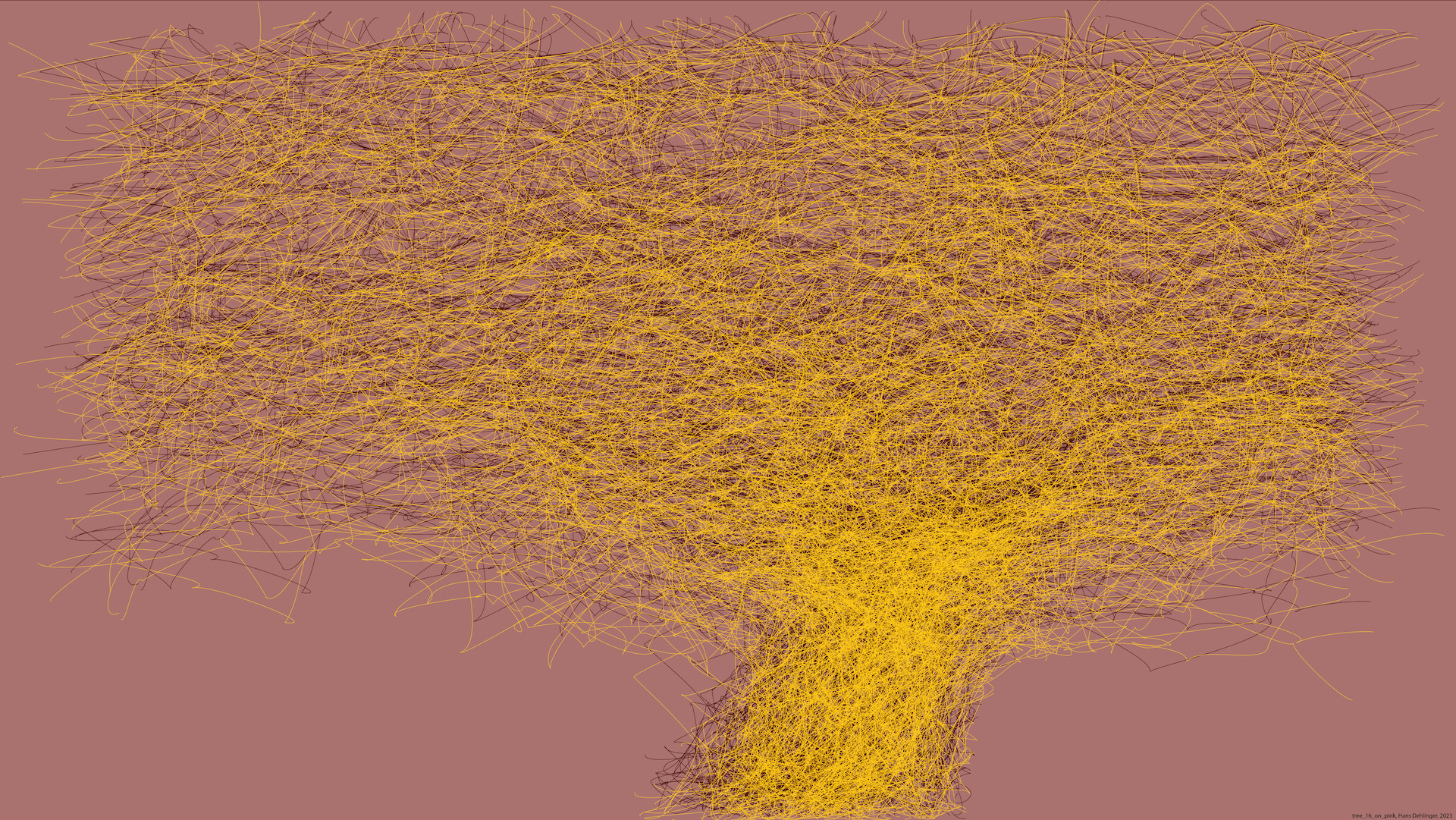
HANS DEHLINGER
Hans Dehlinger, born 1939 in Germany, began working with programming languages and computers in the early1960s during his studies in architecture at the University of Stuttgart (Dipl.Ing.). He continued his education at the University of California, Berkeley (M.Arch., Ph.D.), where he also worked as environmental planner and architect. In 1980 he became Professor of Industrial Design at the University of Kassel, Germany, where he taught until his retirement in 2004.
In the early 1980s he began to explore computers artistically with a focus on algorithmically generated line drawings. His generative artwork is based on procedures and computer code executed on pen plotters. It thus has aspects of both electronic and physical art. The lines can form delicate structures or dense textures - for example his plotter drawings with pencil are gray- shade images that significantly deviate in character from line- oriented drawings, even though they are based on straight lines.
All his generative processes are located in a spectrum between “one-pass processes”, in which drawings are generated by programs without any intermediate visual feedback by the artist, and “composite processes”, in which drawings are generated in a sequence of steps.
His work has received worldwide recognition and was shown first in Europe, later in Canada, Russia, Australia, the USA, Armenia and China. Drawings of Hans Dehlinger are in private collections and in the Victoria and Albert Museum in London and the Block Museum of Art, Evanston, Illinois. He is also a member of the informal group of “Algorists”.
Analog
Articles

Exhibitions




